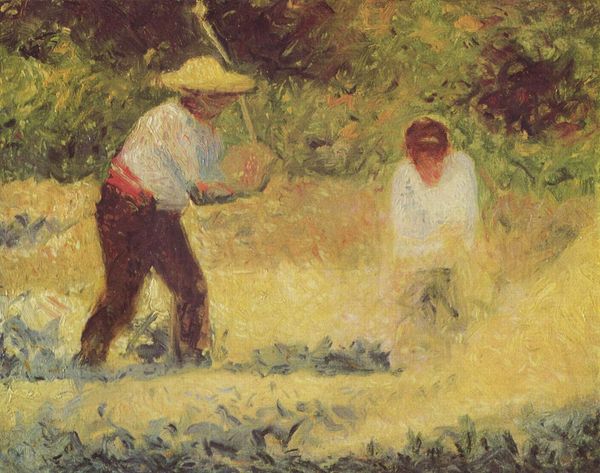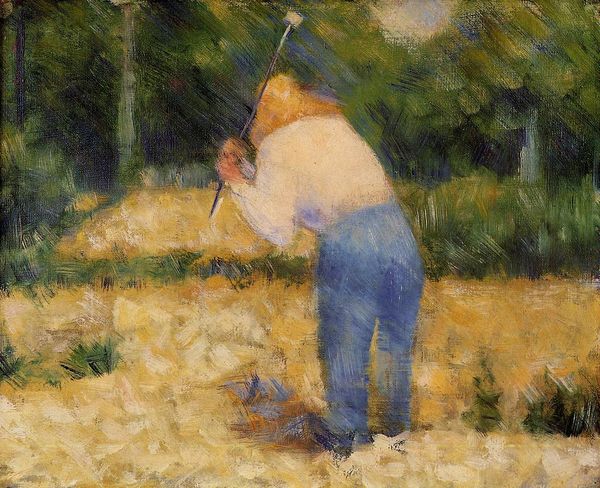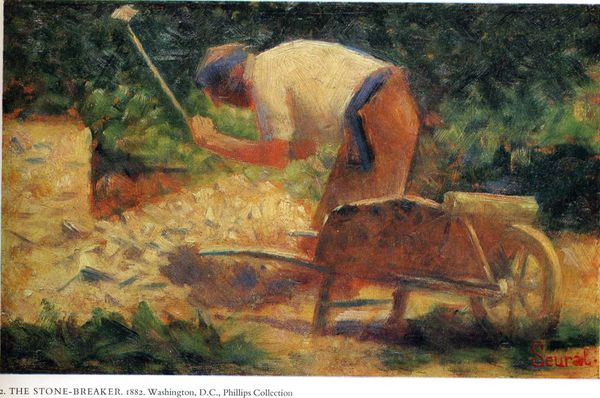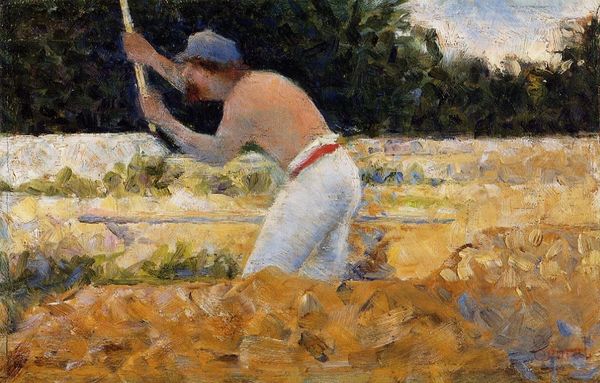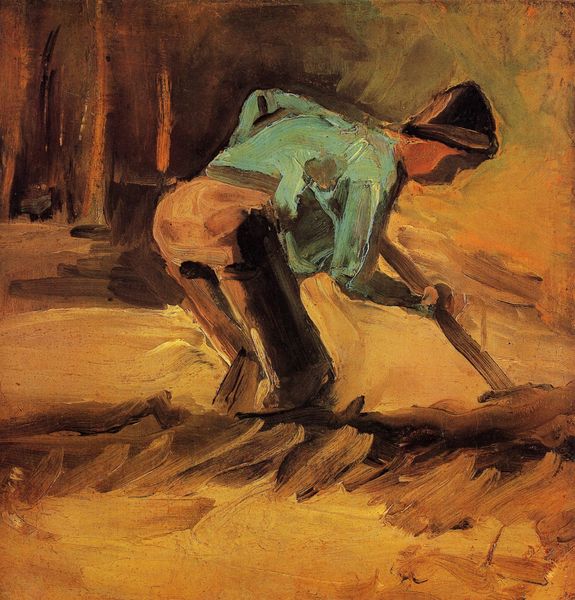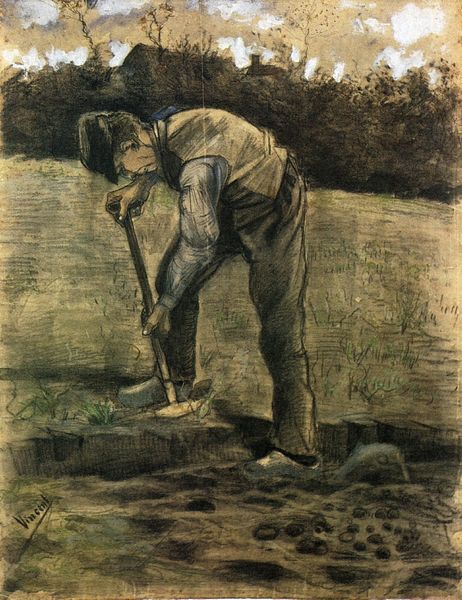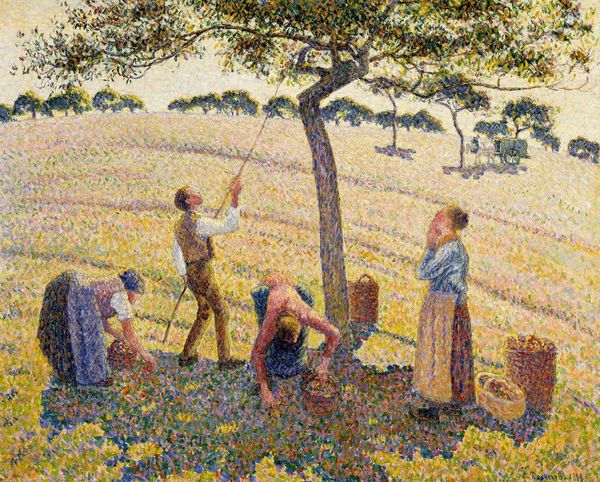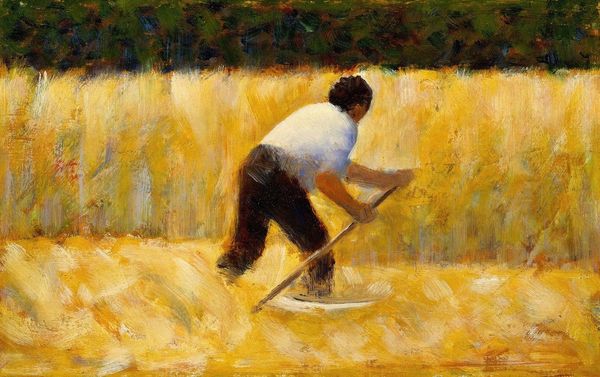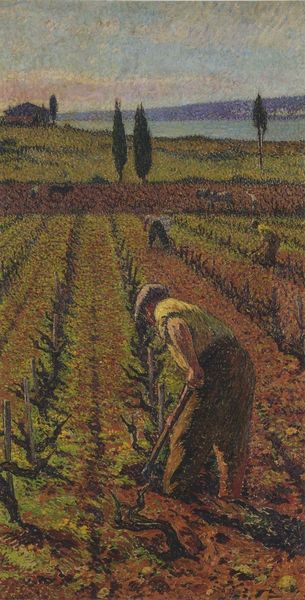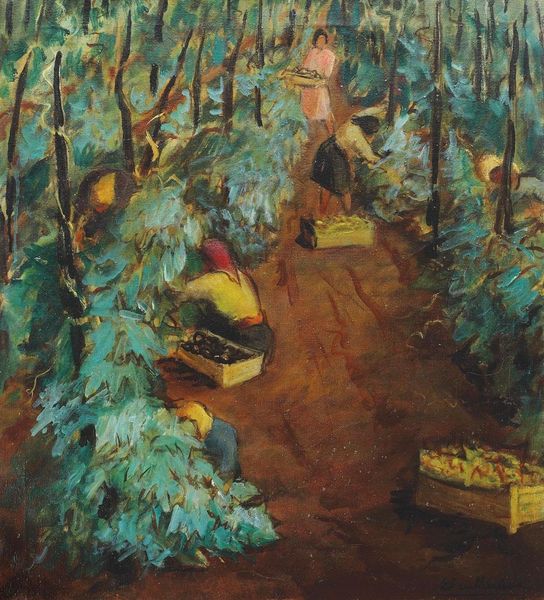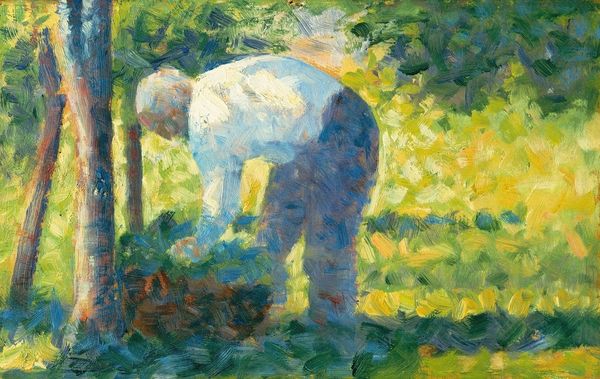
oil-paint, impasto
#
oil-paint
#
landscape
#
figuration
#
oil painting
#
impasto
#
genre-painting
#
post-impressionism
#
realism
Dimensions: 46.3 x 56.1 cm
Copyright: Public domain
Curator: Here we have Georges Seurat's "Peasant with Hoe," created around 1882. Editor: It's remarkably tactile; the impasto gives a palpable sense of labor and earthiness. You can almost feel the heat radiating off the fields. Curator: Indeed. What’s particularly compelling here is how Seurat is engaging with contemporary representations of labor. Consider the historical context: this image comes from a period of profound social upheaval, driven by the burgeoning industrial revolution and its impact on rural life. We see the beginnings of a dialogue, which later flows through the Social Realists. Editor: I see the process almost immediately. The visible brushstrokes become the subject, elevating the act of painting to the same level as the peasant’s work. I wonder, was Seurat aiming for something akin to the Arts and Crafts movement – an insistence on valuing handwork amidst the rise of machines? Curator: A valuable point. One reading sees the artwork in conversation with those crafting movements. While movements, schools, and manifestos developed, the artwork was available to a wider public via gallery and salon exhibitions, or reproduced as a cheap print. The politics of the imagery become crucial. Did Seurat intend to monumentalize peasant labor, or simply to examine the worker through an innovative, divisionist technique? Editor: It's intriguing how this bridges the gap between realism and a more abstract exploration of paint and material. The subject serves the materials here. We cannot forget the art market and system in which this piece existed, how it moved within it. Curator: Precisely, the layering of socio-political commentary, innovative brushwork, and presentation in major exhibitions, speaks to how even seemingly straightforward genre paintings could participate in wider debates of that period. Editor: Thinking about its production and reception really underscores the complex interplay of labor, representation, and the art market that defined Seurat's time, don’t you think? Curator: Absolutely. The work reminds us that history isn't just a collection of dates and events; it’s woven into the very fabric of how we see and understand the world, one painting at a time.
Comments
No comments
Be the first to comment and join the conversation on the ultimate creative platform.


